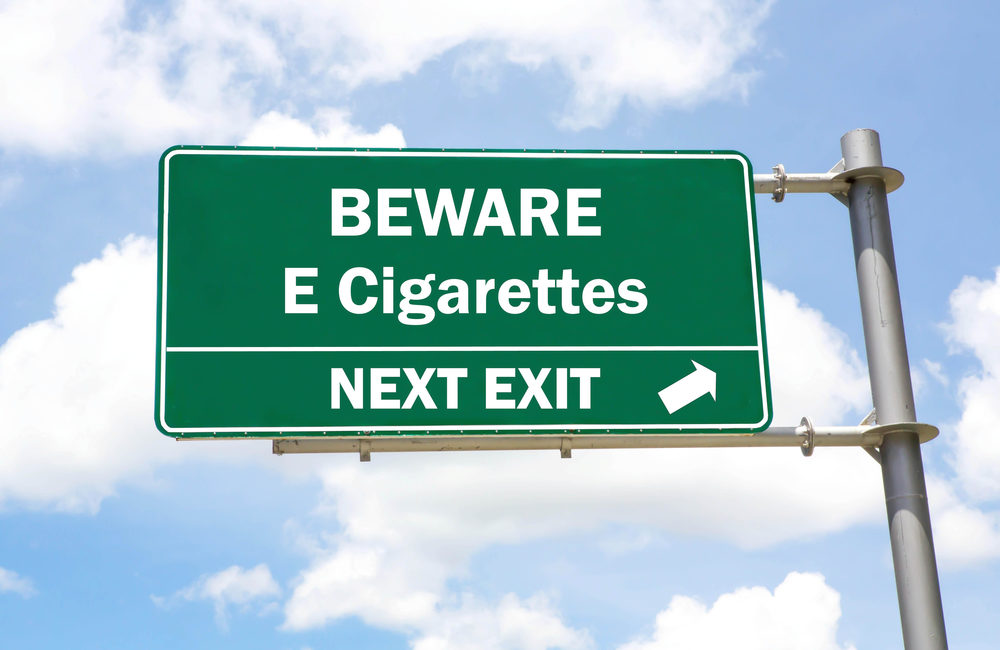Are electronic cigarettes the next major dangerous product posing risk to consumers? Recent reports of illness, hospitalization, and even death linked to “vaping” certainly suggests that consumers are at risk. Vaping is the act of using an electronic cigarette (e-cigarette) to inhale vapor from liquid pods in the device. So what is it about vaping that is so dangerous?
A recent report from NBC News is highlighting the possible dangers of lung diseases and disorders linked to vaping. Consider, for example, the more than 20 Americans in the Midwest who have been hospitalized due to severe breathing difficulties. Their only common link is the use of e-cigarettes. Doctors aren’t sure what exactly is causing the lung damage, but are concerned because patients don’t seem to be getting better.
Why E-Cigarettes are a Dangerous Product
Part of the reason doctors cannot determine why the patients are getting sick is because it is unclear exactly what the patients have been inhaling. There is no requirement that e-cigarette companies list ingredients on their packaging. That means that consumers could be inhaling toxic chemicals that are dangerous or even life-threatening. And what is worse is that consumers have no way of knowing.
Doctors are sure that all of the patients hospitalized in the Midwest are e-cigarette users. However, they are not sure which type of device the patients have been using. At this time, there is no medical consensus on whether it is the e-cigarette itself or an ingredient in the liquid pods that is causing the illnesses.
Many of the patients are young adults, and they say they have used e-cigarette devices to inhale not only nicotine but also THC, which is the psychoactive ingredient in marijuana.
Patients Getting Worse with Treatment
Perhaps the most disconcerting fact about this pattern is that most of the teens were taken to the hospital with what originally looked like advanced respiratory infections, like pneumonia. However, instead of responding to treatment, patients are only getting worse.
Doctors say that the patients usually end up in the Intensive Care Unit, and some patients have needed assistance with breathing. Many of them are improving, but only by hard-won small degrees.
The E-cigarette Black Market
The majority of the cases in the Midwest have occurred in states like Wisconsin, where e-cigarettes are illegal. One patient in Wisconsin started feeling sick after taking only a couple hits from a newly purchased vape cartridge. He went to the hospital the next morning, and like all of the other patients, his symptoms became progressively worse throughout the day as he received treatment. By that evening, his lungs were filling with fluid and he was in a medically-induced coma to survive. He pulled through, but is recovering slowly.
This particular patient bought his vape cartridge off the street, not from a reputable shop. Like all black market items, illegally purchased vape cartridges can be dangerous. There is no regulation, and there is no enforcement. If you buy something from the street, it could be adulterated.
Though many people do persist buying these mystery liquids from street dealers, it remains unclear whether this illegal activity is solely to blame for this most recent cluster of vape-related illness. Illegally purchased vape cartridges are most certainly a dangerous product, but the harm they cause is such a recent public health hazard that doctors have not examined enough cases to draw a scientific conclusion.
Why Teens are Most at Risk
E-cigarettes stand to cause more harm to teenagers, whether purchased legally or illegally. Adolescent lungs are still developing, which can make teens more vulnerable to the chemicals in e-cigarette cartridges. It may possibly explain why most of the patients experiencing lung injury from vaping are teens or young adults.
Teens who vape are doing damage to their developing brains as well. Imaging studies of teenagers who start smoking or vaping at a young age show sadly reduced activity in the areas of the brain that are responsible for decision making. This overall effect can make a person more sensitive to other drugs and more given to impulsivity.
Studies conclude that, although e-cigarettes and traditional cigarettes contain a variety of poisonous chemicals, this effect on the brain is mostly due to nicotine.
What about FDA Regulation of this Dangerous Product?
Since 2016, the U.S. Food and Drug Administration (FDA) has had the authority to regulate e-cigarettes. However, the agency has allowed e-cigarette manufacturers to postpone their applications for FDA approval until August, 2022. In the meantime, these products remain on the market and continue to influence teens to become addicted to nicotine.
Currently, the FDA does not require e-cigarette manufacturers to list all of their ingredients on product labels. Scientists and activist groups have had to resort to laboratory tests on the liquid cartridges to figure out the ingredients. The results are disturbing. Studies have found:
- Heavy metals
- Acetals, in JUUL brand e-cigarettes
- Ultra fine toxic particles
In addition to the dangers of nicotine, these additives are poisonous. It’s absolutely possible that these irritating toxins are making e-cigarette users sick, but at this time, without FDA oversight there is no way for consumers to know which brand of e-cigarette is a potentially dangerous product and which is comparatively safe.
JUUL E-Cigarettes of Particular Concern for Teens
JUUL brand e-cigarettes represent an increased risk of harm for teens compared to other brands. More specifically, JUUL health risks include severe lung illness, seizure, stroke, and even death.
Unlike many other products, JUUL aggressively markets to teens with their small, easily concealable design. Teens can hide the device and use it discreetly even during the school day. As a result, teens are becoming addicted to nicotine at truly alarming rates.
The nicotine concentration of JUUL vape pods definitely warrants classification as a dangerous product. The nicotine concentration is five percent by volume, which is more than twice that found in similar devices. The higher concentration of nicotine obviously increases the risk of addiction.
Nicotine is a highly addictive substance. Studies show that nicotine is roughly as addictive as cocaine, and even more addictive than barbiturates and alcohol.
The amount of nicotine in one JUUL pod is the same as an entire pack of cigarettes. Teens often use more than one pod in a sitting, which exposes them to unsafe levels of nicotine and possibly even nicotine poisoning. Nicotine poisoning can have both immediate and long-term consequences.
Moreover, JUUL uses nicotine salts instead of the chemically modified form of freebase nicotine found in other brands. This form of nicotine more closely resembles the structure of the naturally occurring compound in tobacco leaves. It absorbs more easily into the bloodstream than the chemical structure in other brands of e-cigarettes.
Have Questions about a Dangerous Product?
Regardless of the forbearance the FDA has with e-cigarette companies, manufacturers and distributors are still liable when their product causes harm. Without listing their ingredients, consumers cannot know exactly what they are inhaling into their body. Nevertheless, the lack of transparency is not a license to pose a threat to public health.
If you have questions about a dangerous product, such as JUUL or other e-cigarettes, contact Drug and Device Watch. If you have medical bills or injuries from using e-cigarettes, you may have a claim for compensation. Call 1-888-458-6825 or contact us online to learn more about how to get started.
Sources:

